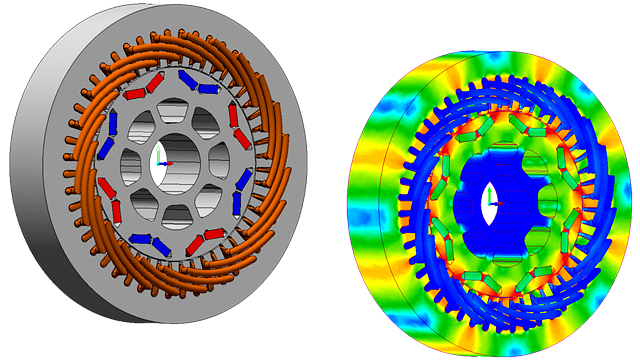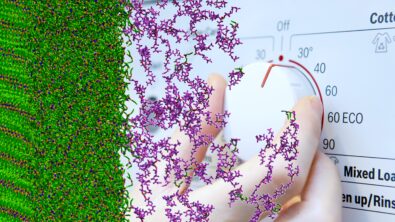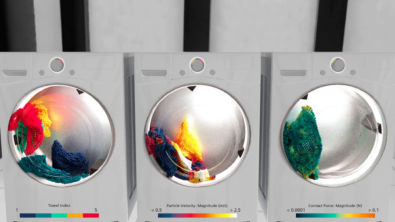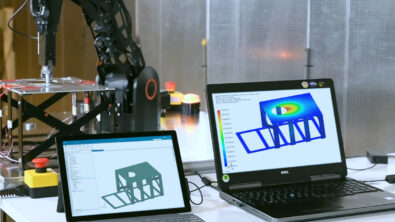China is back to business with Simcenter 3D Electromagnetics

Good news from a customer in China (and an opportunity to brush up on your electromagnetics)
Like many families in Europe, we are starting the third week of confinement and the novelty is starting to wear thin. Yes, there are positives. I have finally caught up on all the laundry. My husband has had time to trim the willow trees in the rose garden (finally). My daughter has planted all the seeds for our veggie patch this summer. And my son is keeping busy with e-school and his social lifeline: his smart phone.
And I can’t complain: I’m still working. A bit slower than usual, but I still am out there (virtually from behind my computer like everyone else) talking to Simcenter customers about how they are creating digital twins and innovating in these challenging times.
This is why I want to share a little vignette about what happened last week:
March 23, 2020, Hamme-Mille, Belgium/Shenzhen, China 8:30 a.m. CET I fired up Teams and read my email. Nothing shocking there. Around 9:00, my Teams meeting started with Lauri, a Finnish engineer from Salcomp who works in Shenzhen, China. (Salcomp is the market leader in smart phone and tablet chargers.) With the help of IDEAL GRP, a Siemens Recognized Smart Expert and Solution Partner in Finland, Lauri is one of the first customers to get his hands on Simcenter 3D Electromagnetics.
Electromagnetics & Smart Phone Chargers?
You might wonder what does electromagnetics have to do with smart phone charger design? We’ll go into the details in an upcoming story, but basically Lauri explained that he uses Simcenter 3D Electromagnetics to simulate his planar transformer design and deal with EMI (electromagnetic interference) issues. If this is all Chinese to you (sorry I couldn’t resist – I blame Day 14 of Belgian confinement), Lauri’s main goal is to help design safe and energy efficient chargers. And since Salcomp pretty much makes chargers for all the big players in the industry, there is a very good chance that you and I own some of Lauri’s work.

But, let’s not digress. (I’ll be working on Lauri’s more technical story in the days to come.) What I wanted to share with you is the sense of hope I got from our conversation. We had already postponed the meeting earlier this month because some of Lauri’s engineering colleagues weren’t back from Wuhan yet and his workload was a little challenging. Understandably.
What I wanted to share with you is the sense of hope I got from our conversation.
China is back to business
On Monday, we finally had our chat about how Simcenter 3D Electromagnetics is helping Lauri and his colleagues cut a month off their development time – even if it is still rather early days. The good news was that the new software version was working out nicely. We also chatted a bit about the next steps for electromagnetics and its engineering potential. Lauri was also quick to point out that electromagnetics was probably a decent choice for future engineers.
Can chargers save the planet?
And this got me thinking. You know, I bet he is right. Dr. David Lowther and Koen De Langhe touched on this topic in the white paper we worked on together last year. Electromagnetics is all over the place yet there is still a lot of work to be done in the area of energy efficiency. (Just think of all those EV engines and batteries out there; not to mention all the industry machines!) And there will be more EMI issues as more and more IoT and AI applications appear.

Experts agree that energy efficiency improvements are still there for the taking. Engineers can get up to 60% more energy out of industrial electric motors with better energy-efficient designs and smart control systems. (FYI: Using early stage design tools from the Simcenter portfolio like Simcenter Amesim amongst others can help here. Check out a free webinar here.)
Nuclear-power-plants’ worth of savings
This is the surprising part. A rough estimate is that about 300 million industrial machines account for about a quarter of the global energy consumption. Get these and future machines to run optimally (and electromagnetics plays a role here) and you are talking nuclear-power-plants’ worth of savings potential. To put it in perspective, this is the type of consumption that cities like London or Brussels go through in two or three years!
On the other side of the scale, think of the energy efficiency gains if every single charger on the planet was optimized for holistic energy management and energy consumption. (I couldn’t find any stats for you, but I’d guess we’d be talking in the billions of KwHs).
So anyways, my positive report of the week. China is restarting and electromagnetics is definitely a serious area to consider for the future of energy efficiency (and engineering as a whole).
There is light at the end of the tunnel, folks.
Electromagnetics Reading List
If you haven’t already: download the Electromagnetics in the Age of Industry 4.0 white paper here. (We all have extra time to read these days.)
There is also a shorter blog if you prefer:
And if you haven’t already read this one – it is my visit to the virtual Geneva International Motor Show early this month!
Take care and Talk Soon!
Jenn


